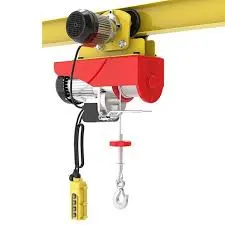


Types of Fall Protection Ensuring Safety in Elevated Work Environments
Fall protection is a critical aspect of ensuring worker safety in various industries, especially those involving elevated workspaces such as construction, maintenance, and telecommunications. Falls from heights remain one of the leading causes of workplace injuries and fatalities, necessitating the implementation of appropriate fall protection measures. This article will explore the different types of fall protection systems, their applications, and the importance of choosing the right solution for specific work environments.
1. Personal Fall Arrest Systems (PFAS)
Personal Fall Arrest Systems are designed to safely stop a worker from falling once a slip or misstep occurs. These systems typically comprise three main components an anchorage, a body harness, and a lanyard or lifeline.
- Anchorage This is a secure point that can withstand the forces imposed during a fall. It must be installed according to safety regulations. - Body Harness This is worn by the worker and is designed to distribute the forces over the body during a fall. It should be fitted correctly to ensure maximum safety. - Lanyard/Lifeline This connects the harness to the anchorage and is often equipped with shock absorbers to reduce the impact forces experienced during a fall.
PFAS is essential for workers operating at heights, such as in construction or maintenance jobs, providing a reliable means of preventing serious injury or death.
2. Guardrails
Guardrails are a passive form of fall protection that serves as a physical barrier to prevent workers from falling off elevated surfaces. They can be installed around open edges of platforms, roofs, and stairs. Guardrails typically consist of top rails, mid-rails, and toe boards, designed to meet specific safety standards for height and strength.
The advantage of guardrails is that they don’t require active engagement from the worker; they’re always in place and protect everyone, regardless of whether they are wearing a harness. However, proper installation and maintenance are critical to ensure their effectiveness.
3. Safety Nets

Safety nets are often used in construction environments, especially when work is being performed at significant heights. These nets act as a barrier to catch workers who might fall, reducing the risk of serious injury.
Installation should be strategically placed below the work area, and the nets must be made from high-quality materials for durability and effectiveness. Safety nets are particularly useful when guardrails are not feasible, such as when scaffolding is in use or for large construction projects.
4. Fall Restraint Systems
Fall restraint systems are designed to prevent workers from reaching a point where a fall could occur. These systems are somewhat similar to PFAS, but they focus on restricting movement rather than arresting a fall after it happens.
This can be achieved through the use of harnesses connected to a secure anchorage point, limiting the worker’s access to elevation edges or hazards. Fall restraint systems are particularly useful in situations where the risk of falling is present but preventable through proper positioning.
5. Positioning Devices
Positioning devices are used when a worker needs both hands free to perform tasks while working at heights. These systems allow the worker to be suspended in a secure position, preventing falls while enabling operational efficiency.
Examples include pole straps for linemen working on utility poles and climbing harnesses that allow workers to secure themselves while using both hands safely.
Conclusion
The importance of fall protection in work environments cannot be overstated. Each type of fall protection system has its unique advantages, applications, and regulations. Employers must assess their specific work conditions and choose the appropriate systems to ensure the safety of their workers. Regular training, maintenance, and adherence to safety standards are vital in creating a culture of safety, ultimately minimizing the risks associated with working at heights. In doing so, we can protect our most valuable asset—our workforce.



